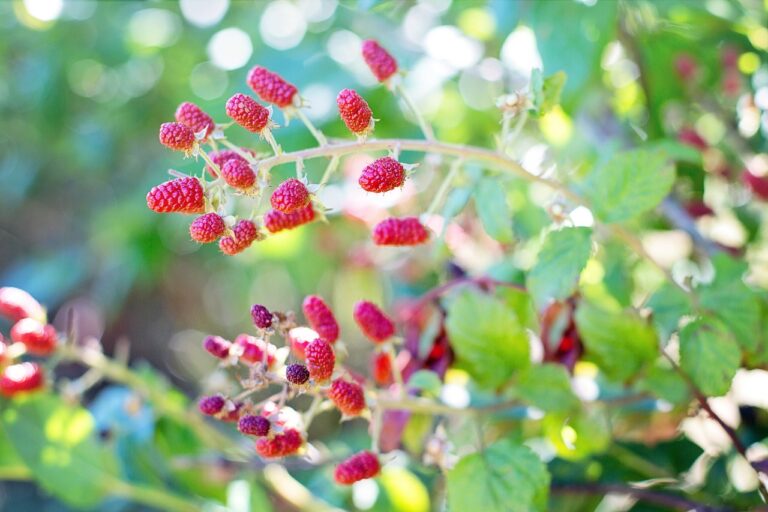The Role of Food in Indigenous Knowledge Systems and Sustainability Practices
Indigenous communities around the world have long practiced traditional food systems that are deeply intertwined with biodiversity. These systems not only provide sustenance for the communities but also play a crucial role in maintaining the delicate balance of ecosystems. Through centuries of knowledge and practices, indigenous peoples have developed sustainable ways of harvesting, cultivating, and consuming a wide array of plants, animals, and other resources from their environments.
The biodiversity within indigenous food systems represents a rich tapestry of culturally significant foods that hold both nutritional and spiritual value. By honoring and preserving these traditional foods, communities are able to maintain their cultural identities and pass down valuable knowledge to future generations. Furthermore, the diversity of crops and livestock in indigenous food systems contributes to the overall resilience of ecosystems, making them more adaptable to environmental changes and challenges.
Cultural Significance of Traditional Foods
Traditional foods hold immense cultural significance for indigenous communities around the world. These foods are not merely sustenance for the body; they are deeply intertwined with rituals, ceremonies, and stories that have been passed down through generations. Traditional foods symbolize a connection to the land, to ancestors, and to a way of life that is rooted in respect for nature and sustainable practices.
In indigenous cultures, the preparation and sharing of traditional foods are integral to social gatherings and celebrations. These foods are often seen as a way to honor the land and show gratitude for the bounties it provides. The act of gathering, preparing, and sharing traditional foods fosters a sense of community and belonging among tribe members, reinforcing bonds that have been forged over centuries of shared experiences.
Traditional Harvesting and Gathering Practices
Indigenous communities around the world have long relied on traditional harvesting and gathering practices to sustain themselves. These practices not only provide essential nourishment but also hold cultural and spiritual significance.
Through a deep understanding of their local ecosystems, indigenous peoples are able to gather a variety of plants, fruits, herbs, and other resources in a sustainable manner. By respecting the land and its natural cycles, they ensure the continuation of these practices for future generations.
• Traditional harvesting and gathering practices are deeply rooted in indigenous cultures.
• These practices involve a profound knowledge of local ecosystems and the sustainable collection of resources.
• Indigenous communities prioritize respect for the land and its natural cycles to ensure the longevity of these traditions.
In addition to providing food and resources, traditional harvesting and gathering practices play a crucial role in preserving biodiversity. Indigenous peoples’ intimate connection with their environment allows them to recognize the importance of maintaining ecological balance. By selectively collecting plants and fruits, they help protect vulnerable species and promote overall ecosystem health.
Furthermore, traditional harvesting and gathering practices serve as a way for indigenous communities to pass down cultural knowledge from generation to generation. Elders within these communities often hold valuable wisdom about plant identification, seasonal patterns, and medicinal uses that are shared through oral tradition. This passing down of knowledge ensures that ancient customs continue to thrive in modern times.
Overall, traditional harvesting and gathering practices not only sustain indigenous communities physically but also spiritually by fostering a deep connection with nature. As we face environmental challenges globally, there is much we can learn from these time-honored traditions about living harmoniously with our surroundings.
What are indigenous food systems and biodiversity?
Indigenous food systems refer to the traditional methods of food production, harvesting, and consumption practiced by indigenous communities. Biodiversity in this context relates to the variety of plants, animals, and ecosystems that these food systems rely on.
Why is it important to preserve traditional harvesting and gathering practices?
Preserving traditional harvesting and gathering practices is important for maintaining cultural heritage, promoting sustainable food systems, and preserving biodiversity. These practices also often involve a deep understanding of the local environment and ecosystem.
What is the cultural significance of traditional foods?
Traditional foods often hold cultural significance as they are tied to ancestral knowledge, rituals, and ceremonies. They can also play a role in community identity and solidarity.
How can traditional harvesting and gathering practices contribute to food security?
Traditional harvesting and gathering practices can contribute to food security by providing diverse sources of nutritious foods that are adapted to local environments. They can also help reduce reliance on external food sources and build resilience to climate change.
What are some examples of traditional harvesting and gathering practices?
Examples of traditional harvesting and gathering practices include foraging for wild plants, fishing using traditional methods, hunting game animals, and cultivating heirloom crops using traditional techniques.







